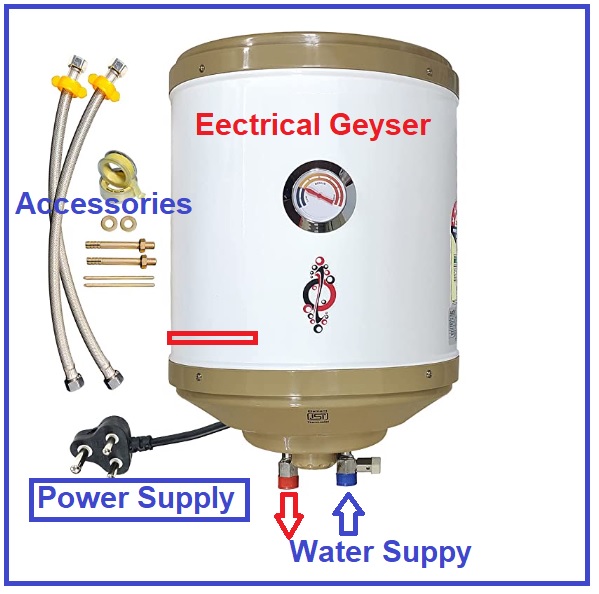Specialized geyser sizes are available for non-standard setups.
Specialized geyser sizes are available for non-standard setups.
Blog Article
How to Choose the Right Geyser to Optimize Power Effectiveness in your house
Picking an energy-efficient geyser is not as straightforward as it seems, calling for mindful assessment of numerous variables. From recognizing the different sorts of geysers, to examining their power effectiveness ratings and considering placement technique, each decision plays an important role in maximizing effectiveness. Balancing the initial investment with long-term cost savings is also vital. Allow's begin on this trip to discover how to make one of the most enlightened option for a hot spring that will certainly reduce your energy expenses while making certain optimum efficiency.

Understanding the Different Types of Geyser
While there are various types of geysers available on the market, recognizing the differences in between them is crucial for energy efficiency (geyser sizes). The first kind, storage hot springs, are the most typical and shop warm water in a container for use when needed. They are readily available in various capacities and are normally energy-efficient, but they can lose warm when not being used
The second kind is the tankless geyser, which warms water on demand, leading to much less energy waste however needing a higher first power draw. Solar geysers use solar energy to warm the water, making them the most energy-efficient however likewise the most costly.
Examining Your House's Hot Water Demands
Before diving into the purchase of a hot spring, it is critical to analyze the warm water needs of your home. This assessment needs to think about various aspects consisting of the number of home participants, frequency of warm water usage, and the variety of warm water outlets in the home (geyser sizes). A tiny family with occasional warm water usage could need a smaller, much less powerful geyser compared to a bigger family with several day-to-day warm water requirements
The kind of appliances that require warm water likewise play a considerable role. Dishwashing machines and cleaning equipments, for example, may require even more warm water than a basic shower or cooking area sink. Moreover, particular tasks such as showering or cleaning additionally affect the frequency and volume of warm water needed.
Evaluating Energy Efficiency Scores of Geyser
Having actually analyzed the hot water demands of your household, it is necessary to turn your attention to the power effectiveness ratings of hot springs. These scores, typically provided her explanation as Energy Aspect (EF), suggest a geyser's overall power performance based upon the amount of hot water produced per unit of gas eaten over a typical day. The greater check out here the EF, the much more efficient the hot water heater.

Factors To Consider in Geyser Dimension and Positioning
Beyond energy effectiveness ratings, the dimension and placement of your geyser are crucial aspects to consider. The dimension of the geyser need to straighten with your family's hot water requirements. click to read A small geyser may utilize less energy yet may not supply sufficient hot water for multiple usages at the very same time, whereas a larger system can meet better demand however might consume even more power.
Hot springs must be mounted close to points of use to reduce warm loss during water transport. Furthermore, thinking about thermal insulation, a geyser situated in a warmer area loses much less warmth and for that reason uses less power to keep the water temperature level.
Cost Analysis: Stabilizing Initial Financial Investment and Long-Term Cost Savings
While dimension and positioning undoubtedly play significant roles in a hot spring's power efficiency, one must not neglect the economic element. When considering the initial investment, the cost of energy-efficient geysers can be more than standard models. The increased in advance cost can be offset by long-term power savings, making it a worthwhile financial investment in the long run (geyser sizes).
Examining long-term financial savings needs an understanding of the geyser's energy score. A device with a greater rating will certainly consume much less energy, translating to lower utility bills over time. Furthermore, federal government incentives and discounts for energy-efficient home appliances can also help recover initial costs.
Finally, upkeep and life expectancy should be factored in. Energy-efficient geysers frequently have much longer lifespans and reduced maintenance prices, contributing to general financial savings. When stabilizing initial financial investment and lasting savings, one ought to consider not just the purchase cost yet additionally energy usage, government incentives, and upkeep prices.

Conclusion
Choosing an energy-efficient geyser needs mindful factor to consider of numerous elements. These consist of recognizing the kinds of hot springs, analyzing your house's warm water demands, examining energy efficiency ratings, and computing cost advantages. The right geyser size, placement, and insulation can considerably decrease power bills and ecological effect. Making a knowledgeable option can lead to substantial long-lasting cost savings, making it a worthwhile investment for your home.
Report this page